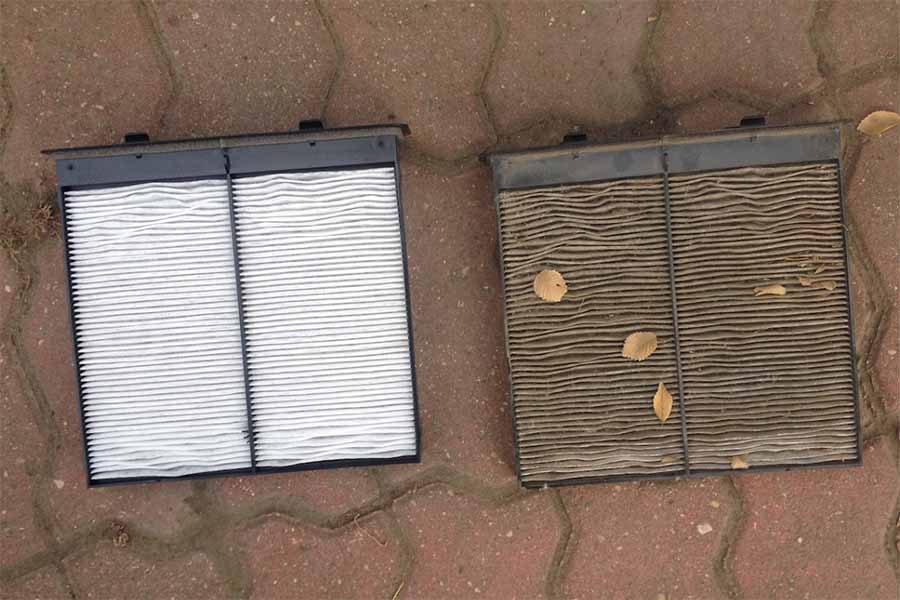The small and inexpensive vehicle thermostat is critical to engine performance. When it fails, your engine will not operate properly, which could lead to more expensive engine work down the road. Fortunately, car thermostat replacement is easy enough. Here's a walkthrough on how to replace a thermostat.

Source | Hoikka1
What a Vehicle Thermostat Does
The thermostat is essentially a temperature-controlled valve that allows coolant to flow through some or all of the coolant system. Its design is simple: It contains a wax element that melts when temperatures reach a certain level, opening the valve, and the wax solidifies again when it cools down.
On starting your engine, the coolant is cold and the thermostat is closed, so the coolant only circulates in the engine passages. As the engine warms up, the coolant gets hot, and the thermostat opens. This allows the coolant to circulate through the radiator and back to the engine. Here's a full breakdown of the thermostat and other cooling system parts.
Bad Thermostat Symptoms
While the vehicle thermostat is a durable part, it's surrounded by hot coolant and subjected to engine vibrations. The thermostat can fail over time, especially if the engine coolant was not flushed and changed on time. Once a thermostat breaks, there are a few signs that give it away.
- If the thermostat fails and gets stuck open, it will always circulate coolant. You will see this as an engine that is slow to warm up, or doesn't reach operating temperature. On newer vehicles, this will trigger the "check engine" light.
- If the thermostat gets stuck closed, the coolant only circulates through the engine, meaning it will quickly get too hot. You'll see this on the gauges, but you would get a "check engine" light, too. Tip: If you suspect a stuck closed thermostat, place your hand on the radiator outlet hose. If the engine is hot, but the hose is cold, that means coolant isn't fully circulating and it's time to change the thermostat.

A hard-to-reach thermostat. Source | Benjamin Gray/Flickr
This is a good project for new DIYers
-
Let the engine completely cool down. Pop the hood.
-
Depending on the vehicle, you may need to raise the front end using a jack and jack stands. Set a drain pan under the engine.
-
Drain the cooling system through the radiator drain valve, or by removing the lower radiator hose. Store the coolant for later recycling or disposal.
-
Following the radiator hose to the engine, disconnect the hose clamp, and pull off the hose.
-
Remove the thermostat housing cover bolts, and lift off the housing. (Note that some newer vehicles use a thermostat/housing combo.)
-
Note the orientation of the thermostat, and how the new one will be mounted. Compare the old and new thermostats closely to be certain you've got the right part.
-
Remove the thermostat and clean the sealing surface, using a gasket scraper.
-
Install the thermostat gasket and ensure correct alignment.
-
Place the thermostat into the engine. The deeper spring-side end goes into the engine, while the shorter end sits in the housing. If there is a tab, it goes through a slot in the thermostat flange. If the thermostat doesn't sit flat, it's incorrectly installed.
-
Replace the thermostat housing, then the housing bolts. Torque to 15 lb-ft. (No torque wrench? This is about the same force as needed to twist open a bottle cap.)
-
Reattach the radiator hose and hose clamp.
-
Lower the vehicle and refill the cooling system. Start the engine and monitor the coolant level, being sure to get out any air bubbles. To ensure air is removed from the system, run the engine for about 10 minutes with the heat on.
-
Take a test drive and watch the engine temperature to confirm your repair, and then after a couple of days, check the coolant level. It's normal for the reservoir to need a little top off.
Take a look at the coolant/antifreeze first. If it looks dirty, it should be flushed. It would be a good idea to flush with the old thermostat still in, or removing it to complete the flush.







